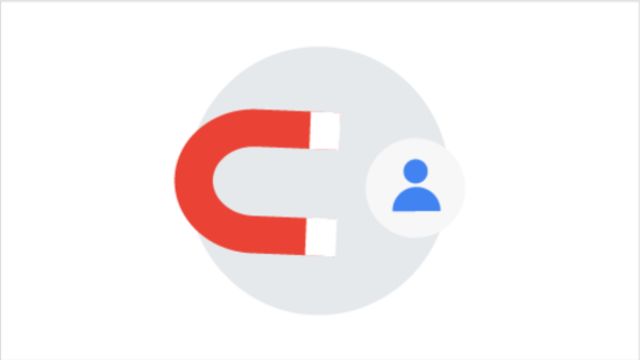
Lead Generation Made Easy: How...
September 6, 2024

Lead creation is an important part of marketing that every business needs to do. It’s the process of getting potential customers interested in your goods or services and turning them into leads. And Google Ads is the best way for businesses to find new customers and improve their marketing.
The COVID-19 pandemic caused problems for many companies that had never been seen before. One of the places I worked, a music school, had to stop teaching music in person because of this. Since students weren’t coming to their building anymore, their phones stopped ringing, and they needed to find a way to fix it as soon as possible. They changed direction and decided to give virtual lessons. To get the word out, they used Google Ads. This choice turned out to be a game-changer, as their phones started ringing again and their business started to grow.
In this piece, I’ll talk about:
By the end, you’ll know how to use Google Ads to get the most out of your business and reach your goals.
These useful tips will help you get more leads for your business through Google Ads.
Any ad that wants to bring in new customers needs to be aimed at the right people.
Before making ads, the music school used Google Search Console to learn about the demographics, interests, and behaviors of possible students. This helped the school create a detailed buyer persona of a potential student.
By looking at search queries, audience demographics, and how well the website worked, they learned a lot about the tastes and habits of their audience.
With this information, the school was able to make ads and content that were more relevant to their community and helped them convert more people.
Follow these steps to find out more about your target group from Google Search Console:
Use this information to make sure your ads reach the right people. For example, if you see that people in a certain age group are more likely to look for certain buzzwords, you can write copy that is geared toward that age group.
By looking at your Search Console data on a regular basis, you can learn a lot about your target group and make decisions based on the data to make your search ads work better.
Your Google Ads ads are built around the keywords you choose. The music school used tools like Google Keyword Planner to do thorough keyword research and find high-intent keywords that their target group was likely to use. They used both long-tail and short-tail keywords to cover a wide range of search terms and make their ads more visible.
Make sure to think about keyword meaning when choosing keywords for Google Ads to bring in leads. Depending on how you collect leads, you’ll need to make sure that the keywords you choose match the purpose of the keywords.
For example, you could use informational keywords if you collect leads through gated white papers or other tools. But if you collect leads through a quote request, you should focus on keywords that have a business or transactional purpose.
The ad writing for the music school was the first thing that people who might be interested in their business saw. They wrote clear, short, and convincing ads that focused on what made their virtual music lessons stand out. They put a strong call-to-action (CTA) on the page to get people to do what they wanted, like contact them, sign up, or buy something.
All of these are important parts of Google Ads that get people to sign up.
The magic happens on the page where people land. It’s the page that people who click on the ad will end up on.
The music school made sure that its home page was set up in the best way possible.
Some of these best practices for landing pages are:
If you look at good examples of landing pages and follow best practices, you can make it more likely that your Google Ads will bring in leads. Also, good landing pages can help improve your Quality Score and increase the number of people who choose to buy from you.
Using ad plugins is another way to use Google Ads to get more leads. Ad extensions are a powerful tool that lets you add more information about your business to your ads.
Extensions like call extensions, location extensions, and site link extensions can help your ad stand out and increase the number of people who click on it.
The music school took advantage of these add-ons to give people more value and improve their chances of getting leads.
Improving your ads’ performance requires that you try and tweak them all the time. You should use measures like CTR, CPC, conversion rate, and cost per lead (CPL) to track how well your ads are doing.
You can compare your metrics to industry benchmarks for search ads to see where you stand. You can also compare your own performance to your own benchmarks to see how you can improve over the course of your campaigns.
By looking at this data to find ways to make your ads, keywords, and landing pages better, you can make the changes you need to.
Google Ads needs to be set up to track conversions. This is an important feature to have if you want to know how well your lead generation efforts are doing.
When people clicked on their ad, the music school I worked for kept track of what they did next, like sign up for a video lesson or buy something. This information helped them figure out how well their ads worked and adjust their campaigns properly.
Make sure to keep track of the sales that are most important to your business. This will help you figure out how well your ads are bringing in leads.
Here is a step-by-step guide to help you set up this powerful tool.
Keeping an eye on how your competitors advertise can give you useful information and help you figure out where you can get ahead.
You can make more targeted and effective ads if you know what works for others in your business.
The music school looked at the ads of its competitors to learn from their wins and failures and to find ways to make their virtual lessons stand out.
Location targeting is important for companies like the music schools that serve people in their area. Location tracking in Google Ads lets you make sure that your ads only show up for people in the area you want. This can help you avoid spending money on clicks from people who aren’t in your service area and make your ads more relevant to people who might buy from you.
Remarketing is a very strong way to get leads from Google Ads users who have already been to your website and get them to come back.
Remarketing is a powerful technique that lets businesses reach out to people who have visited their website before but didn’t buy anything.
The music school used remarketing to send ads to users to inform them of their online music lessons and the benefits of doing so. This strategy not only helped possible students remember the music school’s brand, but it also made it more likely that those users would become leads and, eventually, customers.
All done! Your campaign will now target people who have shown interest in your business by visiting your website and setting your Google Ads remarketing tag.
The music school’s experience shows how well Google Ads can bring in new customers and help businesses do well even when times are tough. By using these 10 methods, they were able to switch to giving virtual lessons and keep getting new leads. You can also use these tips to make effective lead-creation ads in Google Ads for your business.
Here are the best ways to find new leads with Google Ads:
Stay consistent with your efforts, look at how you’re doing, and improve your projects to get the most out of your money. Even when things don’t go as planned, you can help your business grow if you have the right attitude and are determined.
“Fuel your curiosity with us! Whether you bookmark us or ping us, we’ve got your information cravings covered.”
Leave A Comment